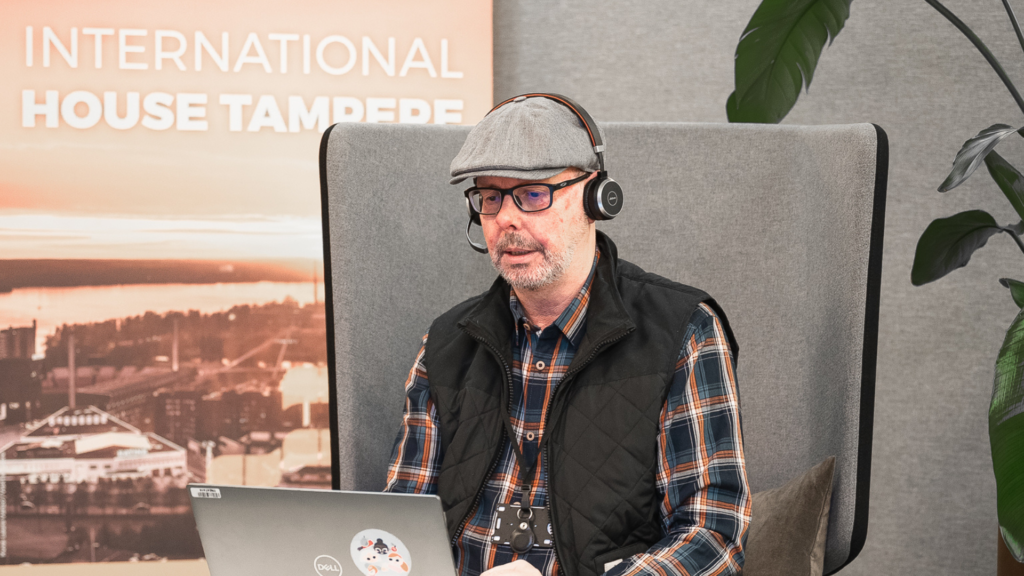Diverse Working Environment Creates a More Welcoming Thinking Perspective

Tiina Mustaniemi, the Chief Operating Officer at Haarla, loves a new challenge. She has been working in the trade and export industry for decades overseeing many aspects of business development. Her entire career has been filled with diverse working environments, which has fostered genuine curiosity for other cultures and backgrounds, and her role at Haarla is no exception. Based in Tampere 60 years ago, the materials supplier currently has offices in Tampere, London, Gothenburg, Tallinn, and Qingdao. On the Finnish side, 20% of Haarla’s employees have an international background.
“I believe it all started with our management team, which in itself has a very diverse background. Influenced by the acquisition of a UK-based company and having management team members working and living abroad impacted how we built the business and company culture. It played a big role in us steering away from a homogenic working environment and developing an open-minded mentality.”
“Why not?” mentality
One of the first international hires at Haarla applied for the job advertised solely in Finnish. “The Finnish wasn’t perfect, but the energy and skills were there. And that is what mattered the most. So we thought – why not?”, Tiina warmly recalled her early days in the company.
This “why not” mentality as well as the ability to take risks instead of going down the familiar path is one of many benefits diversity has brought to Haarla’s business. Every single individual in the company plays a significant role that goes far beyond one’s skill set and experiences. It is largely about unique personality, dynamics, originality, perspective on things, approach to leading and being led, and ways to communicate. All that is a workable recipe to do the job well.
More diversity fosters more creativity and ideation. More diversity creates grounds for idea exchange typically unseen in a homogenic environment in which “sameness” results in rather unoriginal thinking patterns.

It’s about breaking the familiar patterns
Diversity is deeply engraved in Haarla’s working culture. Tiina shared with us a few ways how a diverse working environment is developed in day-to-day operations: “Even though being a curious and diverse team is something very organic to the nature of our company, we also take intentional steps to deepen this culture further.
For example, we foster diversity by mixing people up and placing them in an unusual habitat and working context, or by breaking established structures and silos to make new connections and get to know people from other teams and functions. When people are in the same group for a long time, your thinking starts to narrow.”

“Hiring the first international talent requires everybody to go a little bit outside of one’s comfort zone”
Throughout our discussion, Tiina has shared very practical tips and valuable thoughts for Finnish companies that aim to step into the international recruitment journey:
Run a real-life experiment with the candidate.
- When uncertain about your hiring decision, invite a candidate to your office for 1-2 days to join meetings, shadow others, ask questions, perform simple tasks, converse in an informal set-up, etc. It’s the best experiment that provides real-time feedback and resolves some of the doubts in the hiring process.
Keep in mind other values for your business and the team.
- Leveraging international talents for new market penetration or language skill is great, but don’t forget about other “soft” values brought to the table – overall positive boost in company dynamics, a breeze of fresh and often unexpected ideas, new level of openness, enriched cultural understanding, and widened thinking, not to mention a bunch of amazing stories to share around the coffee table!
Hiring an international talent is no riskier than hiring a Finn.
- There is a lot of stigma and controversial discussions around the topic of international recruitment, but is it backed up by evidence? Dig deeper to address your concerns, understand what the barriers behind the thinking are, what the real risks are, what causes the fear, and why to not even try. Often, through deeper reflection, companies realize that hiring an international talent is no riskier than hiring a Finn. If the work gets done at the expected standards of quality, the passport does not matter. After all, hiring for the skills should be the prerequisite for the decision-making.
Let the math work for you.
- From a practical point of view, automatically excluding any group of talented professionals drastically limits your talent pool. Several sectors are suffering from talent shortage already, and disregarding candidates can hurt your business further. Always strive to find the best candidate for your business and growth.
Many concerns are “maybe” concerns.
- “Maybe some of our customers have a problem with switching to English”, “Maybe we have challenges onboarding the new team member”, “Maybe our employees are not ready for the change” and the list of “maybes” goes on. But here is the core, “maybe” is only an assumption. Basing your most important business decisions (like hiring the right talents) cannot be purely based on “maybes” but rather an open mind and readiness to give it a chance.
In the end of our sit-down with Tiina, she also felt inspired to encourage the other side of this recruitment bubble: “For all the amazing international talents out there: keep going! There is a company out there that is waiting for you. The change is happening, and the culture is changing. You will find your match!”





